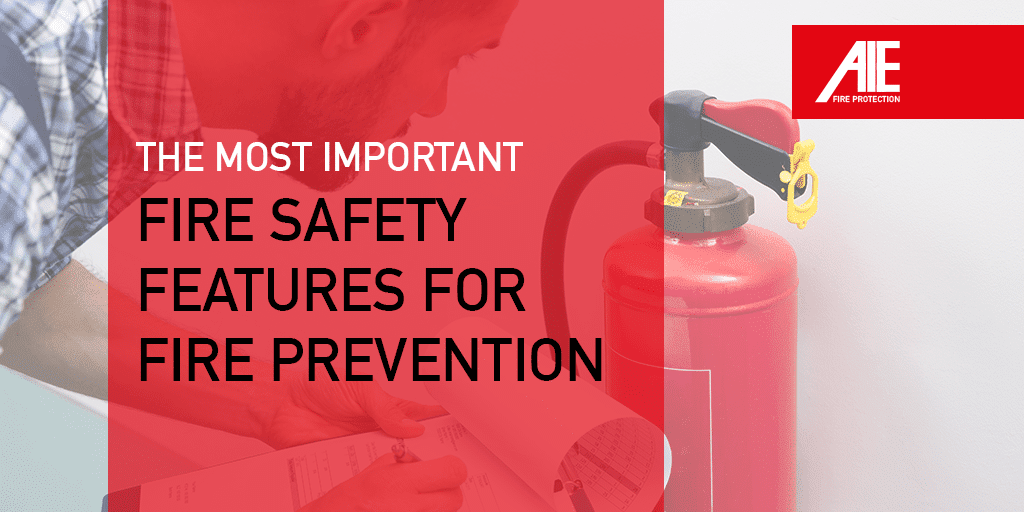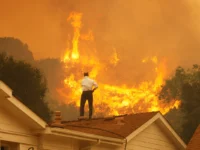Contents
- 1 The Importance of Fire Safety Equipment
- 2 Fire Extinguishers: Your First Line of Defense
- 3 Smoke Detectors: Early Warning for Fire Emergencies
- 4 Fire Alarms: Early Detection for Swift Evacuation
- 5 Sprinkler Systems: Effective Fire Suppression
- 6 Emergency Lighting: Guiding the Way to Safety
- 7 Fire Blankets: Versatile Safety Devices for Fire Emergencies
- 8 Fire Escape Plans: Safely Evacuating in Emergency Situations
- 9 Fire Safety Training: Equipping Individuals with Life-Saving Knowledge
- 10 Regular Maintenance and Inspections: Ensuring Reliable Fire Safety Equipment
The crucial topic of fire safety equipment – In this article, we will explore the importance of having the right tools and devices in place to protect lives and property in the event of a fire. From fire extinguishers and smoke detectors to fire alarms and sprinkler systems, we will highlight the essential safety equipment that can make all the difference in an emergency. So, let’s dive in and discover the key elements of an effective fire safety plan!
The Importance of Fire Safety Equipment
Understanding the potential dangers of fire and the devastating consequences it can have underscores the significance of having proper fire safety equipment in place. Fires can spread rapidly, causing extensive damage to property and posing severe risks to human life. By investing in reliable fire safety equipment, you greatly enhance your ability to prevent fires, detect them early, and respond effectively in case of an emergency.
Fire safety equipment serves as a crucial first line of defense, offering protection and peace of mind for both residential and commercial spaces. With the right tools and devices, you can mitigate the impact of a fire, potentially saving lives and minimizing property damage.
Preventing Fire Incidents
The primary objective of fire safety equipment is to prevent fires from occurring in the first place. By implementing preventive measures, such as fire-resistant materials, fire safety signage, and proper storage of flammable substances, the risk of fire incidents can be significantly reduced. Additionally, routine maintenance and inspections of electrical systems, heating systems, and other potential fire hazards are essential to identify and address any potential issues.
Early Fire Detection
Even with preventive measures in place, fires can still happen. That’s where early detection becomes crucial. Fire safety equipment like smoke detectors and fire alarms are designed to sense the presence of smoke or heat and raise the alarm. These devices provide early warnings, allowing occupants to evacuate the premises promptly and contact emergency services.
Smoke detectors are particularly effective in residential settings, as they can quickly detect the initial signs of a fire, even before flames become visible. They are typically installed in multiple locations throughout a building, ensuring comprehensive coverage.
Rapid Response and Control
In the unfortunate event of a fire, having the appropriate fire safety equipment can make all the difference in terms of response time and control. Fire extinguishers, for instance, are invaluable tools that can help suppress small fires before they escalate. By having extinguishers strategically placed and ensuring occupants are trained in their proper usage, you can effectively contain and extinguish fires in their early stages, preventing further damage and potential hazards.
In more extensive fire incidents, automatic sprinkler systems play a critical role. These systems are designed to release water or other extinguishing agents when triggered by heat or smoke, controlling the spread of the fire until the fire department arrives.
By investing in reliable fire safety equipment, you demonstrate a commitment to the safety and well-being of those within your premises. Remember, the key to effective fire safety lies in prevention, early detection, and rapid response. In the following sections, we will explore specific types of fire safety equipment in more detail, outlining their features, benefits, and best practices for installation and maintenance.
Fire Extinguishers: Your First Line of Defense
When it comes to fire safety equipment, fire extinguishers are an essential tool and your first line of defense in controlling small fires. These portable devices are designed to extinguish or control fires by releasing extinguishing agents that disrupt the chemical reaction that sustains the fire.
Types of Fire Extinguishers
There are different types of fire extinguishers, each specifically designed to combat different types of fires. Understanding the various classes of fires and selecting the appropriate extinguisher is crucial for effective fire suppression.
Class A: These extinguishers are suitable for fires involving ordinary combustible materials such as wood, paper, cloth, or plastics.
Class B: Extinguishers in this category are designed for flammable liquid fires, including gasoline, oil, grease, and solvents.
Class C: Fires involving electrical equipment require Class C extinguishers. They are designed to safely extinguish electrical fires without risking electrocution.
Class D: These extinguishers are specifically designed to combat fires involving combustible metals, such as magnesium, titanium, or potassium.
Class K: Extinguishers classified as Class K are suitable for fires involving cooking oils and fats, typically found in commercial kitchens.
Choosing the Right Fire Extinguisher
When selecting a fire extinguisher, it’s crucial to consider the specific fire risks present in your environment. Assessing the potential fire hazards and understanding the different classes of fires will help you determine the most appropriate extinguisher for your needs.
It’s also essential to consider the size and weight of the extinguisher, as well as its ease of use. Ensure that the extinguisher is easily accessible and mounted in visible locations, along with clear signage indicating its presence.
Maintenance and Training
Once you have the right fire extinguisher in place, it’s crucial to maintain it properly. Regular inspections, conducted by a qualified professional, ensure that the extinguisher is in good working condition and ready for use at any time. Additionally, employees and occupants should be trained on how to use fire extinguishers effectively, including the proper technique and the importance of following the PASS method: Pull the pin, Aim at the base of the fire, Squeeze the handle, and Sweep from side to side.
Remember, fire extinguishers are only effective if they are accessible, well-maintained, and used correctly. They can provide invaluable assistance in controlling small fires, allowing occupants to evacuate safely or even extinguish the fire completely. In the next section, we will explore another essential fire safety device: smoke detectors.
Smoke Detectors: Early Warning for Fire Emergencies
When it comes to fire safety, smoke detectors play a crucial role in providing early warnings and allowing occupants to evacuate promptly. These devices are designed to detect the presence of smoke, which often precedes the flames in the early stages of a fire.
Types of Smoke Detectors
There are two primary types of smoke detectors: ionization smoke detectors and photoelectric smoke detectors.
Ionization Smoke Detectors: This type of detector uses a small amount of radioactive material to ionize the air inside the detector. When smoke enters the chamber, it disrupts the ionization process, triggering the alarm.
Photoelectric Smoke Detectors: Photoelectric smoke detectors utilize a light source and a sensor. When smoke enters the chamber, it scatters the light, causing it to hit the sensor and activate the alarm.
Both types of smoke detectors are effective at detecting fires, but they may respond differently to various types of fires. Ionization detectors are typically more responsive to fast-flaming fires, while photoelectric detectors are better at detecting slow, smoldering fires.
Placement and Maintenance
Proper placement and maintenance of smoke detectors are crucial to ensure their effectiveness. Generally, smoke detectors should be installed in every bedroom, outside each sleeping area, and on every level of the building, including the basement. It is recommended to install both ionization and photoelectric detectors or combination detectors that utilize both technologies for comprehensive coverage.
Regular maintenance is essential to ensure that smoke detectors are functioning correctly. This includes testing the detectors monthly, replacing batteries as needed, and cleaning them from dust and debris. It’s also crucial to follow the manufacturer’s recommendations for replacement intervals, typically every 8-10 years.
Interconnected Smoke Detectors
For enhanced safety, consider installing interconnected smoke detectors. When one detector senses smoke, it triggers the alarm on all interconnected detectors throughout the building, providing a widespread warning. This is especially important in larger homes or buildings where the sound of a single detector may not be heard in all areas.
Interconnected smoke detectors can be hardwired or connected wirelessly. Hardwired systems are typically connected to the building’s electrical system with battery backup, while wireless systems use radio frequency signals to communicate between detectors.
Remember, smoke detectors are crucial for early fire detection and timely evacuation. By installing and maintaining smoke detectors properly, you significantly increase the safety of your home or building. In the next section, we will explore another essential fire safety device: fire alarms.
Fire Alarms: Early Detection for Swift Evacuation
When it comes to fire safety, fire alarms are indispensable devices that provide early detection of fires and alert occupants to evacuate promptly. These systems are designed to detect smoke, heat, or flames and trigger audible and visual alarms, ensuring that people can quickly respond to the emergency.
Types of Fire Alarms
There are various types of fire alarms available, each suited for different settings and applications.
Conventional Fire Alarms: Conventional fire alarms divide the building into zones, with each zone connected to a specific circuit. When a detector within a zone is activated, the alarm panel indicates the corresponding zone, allowing occupants to identify the general area of the fire.
Addressable Fire Alarms: Addressable fire alarm systems provide more detailed information about the location of the fire. Each detector or device is assigned a unique address, allowing the alarm panel to pinpoint the exact area where the activation occurred.
Wireless Fire Alarms: Wireless fire alarm systems utilize wireless communication between the detectors and the control panel. This type of system eliminates the need for extensive wiring, making it an ideal solution for retrofitting existing buildings or areas where wiring is challenging.
Installation and Maintenance
Proper installation and regular maintenance are essential to ensure the effectiveness of fire alarm systems.
During installation, it’s crucial to follow applicable building codes and regulations. Placement of detectors should be strategic, considering factors such as ceiling height, airflow patterns, and potential obstructions. Additionally, it’s important to ensure that the system is integrated with emergency lighting and other fire safety equipment.
Regular inspections and testing are necessary to confirm that the fire alarm system is functioning correctly. This includes testing the alarms, checking the battery backup systems, and conducting periodic inspections by qualified professionals.
Integration with Other Safety Measures
Fire alarms are an integral component of a comprehensive fire safety plan. They should be interconnected with other safety measures, such as sprinkler systems, emergency lighting, and fire suppression systems. This integration ensures a synchronized response and maximizes the effectiveness of the overall fire safety strategy.
Remember, fire alarms are crucial for early detection and swift evacuation. By installing and maintaining fire alarm systems properly, you significantly enhance the safety of your premises. In the next section, we will explore another critical fire safety device: sprinkler systems.
Sprinkler Systems: Effective Fire Suppression
When it comes to fire safety, sprinkler systems are a crucial component in controlling and suppressing fires. These automatic fire protection systems are designed to detect and respond to fires, providing a quick and effective means of fire suppression.
How Sprinkler Systems Work
Sprinkler systems consist of a network of pipes with sprinkler heads strategically placed throughout a building. Each sprinkler head is equipped with a heat-sensitive element that activates when exposed to high temperatures.
When a fire occurs, the heat from the flames triggers the sprinkler head closest to the fire. This causes the heat-sensitive element to rupture, allowing water to flow from the activated sprinkler head onto the fire below. The water helps to cool the fire, suppress the flames, and prevent its spread to other areas.
Types of Sprinkler Systems
There are different types of sprinkler systems, each designed for specific applications and fire hazards.
Wet Pipe Systems: Wet pipe systems are the most common type of sprinkler system. Water is constantly held within the pipes, ready to be discharged immediately when a sprinkler head is activated.
Dry Pipe Systems: Dry pipe systems are used in areas where freezing temperatures are a concern. Instead of water, the pipes are filled with pressurized air or nitrogen. When a sprinkler head is activated, the air pressure drops, allowing the water to enter the pipes and flow through the activated sprinkler head.
Pre-action Systems: Pre-action systems are typically used in areas where water damage needs to be minimized, such as computer rooms or museums. These systems require two triggers for water to flow: the activation of a fire detection device and the operation of a sprinkler head.
Maintenance and Inspection
Proper maintenance and regular inspections are crucial to ensure the reliability and effectiveness of sprinkler systems.
Regular inspections should be performed by qualified professionals to check for leaks, ensure proper water pressure, and verify that the system is free from obstructions. In addition, all sprinkler heads should be inspected to ensure they are unobstructed and in good working condition.
It’s also important to conduct routine tests of the system, including flow tests and alarm tests, to verify that the sprinkler system is operating as intended.
Integration with Fire Alarms and Emergency Lighting
Sprinkler systems should be integrated with fire alarm systems and emergency lighting to provide a comprehensive fire safety solution. When a sprinkler system is activated, it should automatically trigger the fire alarm system, alerting occupants to evacuate the premises. Emergency lighting ensures visibility during the evacuation process, even if the power is disrupted.
Remember, sprinkler systems are a crucial part of fire safety, providing effective fire suppression and protection. By properly maintaining and regularly inspecting sprinkler systems, you enhance the safety of your building and minimize the potential damage caused by fires. In the next section, we will explore another essential fire safety device: emergency lighting.
Emergency Lighting: Guiding the Way to Safety
In fire emergencies, visibility can quickly become limited due to smoke, power outages, or other factors. That’s where emergency lighting systems play a critical role in guiding occupants to safety. These lighting systems are designed to automatically activate during a power failure or when the fire alarm system is triggered.
The Importance of Emergency Lighting
During a fire emergency, people may panic, become disoriented, or experience difficulties in locating exits and evacuation routes. Emergency lighting provides the necessary illumination to help individuals navigate through the building and find their way to safety.
Emergency lighting is particularly crucial in large buildings, complex structures, or areas with limited natural light. It ensures that exits, stairwells, corridors, and other critical areas remain well-lit, allowing for a safe and orderly evacuation.
Types of Emergency Lighting
There are several types of emergency lighting systems commonly used:
Emergency Exit Signs: These signs are designed to be clearly visible and indicate the locations of emergency exits. They are often equipped with backup batteries to ensure their visibility during power outages.
Emergency Lights: These lights are strategically placed throughout the building and provide illumination during emergencies. They are typically battery-operated or connected to an emergency power supply.
Backup Power Systems: Backup power systems, such as generators or uninterruptible power supply (UPS) units, provide a reliable source of electricity during power outages. They ensure that emergency lighting, fire alarm systems, and other critical equipment continue to function.
Maintenance and Testing
Regular maintenance and testing of emergency lighting systems are essential to ensure their reliability when needed.
Monthly tests should be conducted to ensure that emergency lights are functioning correctly. This involves simulating a power outage and verifying that all emergency lights activate as intended.
In addition, annual inspections by qualified professionals should be carried out to check the condition of the emergency lighting system, including the battery life, wiring, and proper illumination of exit signs.
Integration with Fire Safety Systems
Emergency lighting systems should be integrated with other fire safety systems, such as fire alarms, sprinkler systems, and fire suppression systems. This integration ensures a synchronized response during fire emergencies, maximizing the effectiveness of the overall fire safety strategy.
Remember, emergency lighting plays a crucial role in guiding individuals to safety during fire emergencies. By properly maintaining and testing emergency lighting systems, you ensure that occupants can navigate through the building and reach exits without confusion or delay. In the next section, we will explore another essential fire safety device: fire blankets.
Fire Blankets: Versatile Safety Devices for Fire Emergencies
When it comes to fire safety equipment, fire blankets are versatile and valuable tools that can be used in a variety of ways during fire emergencies. These non-flammable blankets are designed to smother small fires, provide a protective barrier, or aid in evacuating individuals.
Smothering Small Fires
Fire blankets are particularly effective in smothering small fires. In the event of a small fire involving a person’s clothing or a small object, the blanket can be used to quickly extinguish the flames. By covering the fire source with the blanket, the oxygen supply is cut off, depriving the fire of fuel and causing it to die out.
It’s important to remember that fire blankets should only be used on small, contained fires that can be safely extinguished. For larger or spreading fires, it is crucial to evacuate and contact emergency services.
Protective Barrier
Fire blankets can also serve as a protective barrier, providing a shield between individuals and the fire. In situations where individuals need to pass through flames or hot areas to reach safety, wrapping themselves in a fire blanket can offer temporary protection from the heat and flames.
However, it’s essential to prioritize evacuation and never rely solely on a fire blanket for protection. Fire blankets should only be used as a last resort when there is no other safe path to escape.
Aiding in Evacuation
Fire blankets can play a crucial role in aiding the evacuation of individuals, especially those who may have difficulty moving or escaping on their own. By enveloping a person in the fire blanket, it can provide a layer of protection as they are guided to safety.
During evacuations, it is important to follow established escape routes and evacuation procedures. Fire blankets should be used in conjunction with other fire safety measures, such as fire alarms and emergency lighting, to ensure a safe and orderly evacuation.
Maintenance and Storage
Fire blankets should be properly maintained and stored to ensure their effectiveness during fire emergencies.
Regular inspections should be conducted to check for any signs of damage or wear. If a fire blanket is found to be damaged, it should be replaced immediately.
Fire blankets should be stored in easily accessible locations, clearly marked with signage. They should be kept away from potential fire hazards and within reach in areas where fires are more likely to occur, such as kitchens or workshops.
Remember, fire blankets are versatile safety devices that can be used to smother small fires, provide a protective barrier, or aid in evacuation. By understanding their proper usage and maintaining them well, you can enhance your fire safety preparedness. In the next section, we will explore the importance of fire escape plans.
Fire Escape Plans: Safely Evacuating in Emergency Situations
Having a well-thought-out fire escape plan is essential for the safety of individuals in residential and commercial settings. Fire escape plans outline the necessary steps and procedures to follow in the event of a fire, ensuring a swift and orderly evacuation.
Key Elements of a Fire Escape Plan
A well-designed fire escape plan should include the following key elements:
Identify Escape Routes: Identify primary and secondary escape routes from each area of the building. These routes should lead to designated safe locations outside the building.
Exit Strategies: Determine the best exit strategies for each area, considering factors such as the number of occupants, the layout of the building, and potential fire hazards.
Emergency Exits: Clearly mark emergency exits with illuminated exit signs and ensure they are easily accessible and unobstructed at all times.
Meeting Points: Establish designated meeting points outside the building where occupants can gather after evacuating. These meeting points should be a safe distance away from the building and easily identifiable.
Communication: Ensure that a reliable method of communication is available to notify emergency services and alert others about the fire. This may include using a mobile phone or a nearby emergency phone.
Education and Training
Education and training are essential components of any fire escape plan. Occupants should be familiar with the plan, knowing the escape routes, meeting points, and evacuation procedures.
Regular fire drills should be conducted to practice the escape plan and ensure that occupants are prepared to respond quickly and calmly in an emergency. These drills help familiarize individuals with the evacuation process, identify any potential issues or obstacles, and reinforce the importance of fire safety protocols.
Considerations for Specific Occupants
When creating a fire escape plan, it’s important to consider the specific needs of individuals who may require additional assistance. This includes the elderly, individuals with disabilities, or young children. Special arrangements should be made to ensure their safe evacuation, such as assigning a buddy system or providing accessible evacuation routes.
Remember, a well-designed fire escape plan is a crucial element of fire safety. By establishing clear procedures and regularly practicing the plan, you can help ensure the safe evacuation of occupants in the event of a fire. In the next section, we will explore the importance of fire safety training.
Fire Safety Training: Equipping Individuals with Life-Saving Knowledge
Proper fire safety training is paramount in ensuring individuals know how to respond effectively during a fire emergency. By equipping people with life-saving knowledge and skills, fire safety training plays a vital role in preventing fires, minimizing risks, and facilitating safe evacuations.
The Importance of Fire Safety Training
Fire safety training serves several important purposes:
Prevention: Training individuals on fire prevention measures, such as proper handling of flammable materials, electrical safety, and fire hazard awareness, helps reduce the likelihood of fires occurring in the first place.
Knowledge: Fire safety training provides individuals with essential knowledge about fire behavior, evacuation procedures, and the proper usage of fire safety equipment. This knowledge empowers individuals to make informed decisions and take appropriate actions during fire emergencies.
Confidence: By participating in fire drills and training exercises, individuals gain confidence in their ability to respond calmly and effectively during a fire emergency. This confidence can significantly improve the chances of a successful evacuation.
Training for Different Settings
Fire safety training should be tailored to the specific needs of different settings, such as residential buildings, workplaces, schools, or healthcare facilities.
In workplaces, employees should receive comprehensive training on fire safety protocols, including the location and usage of fire extinguishers, emergency exits, and assembly points.
In residential settings, individuals should be educated on home fire safety, including the importance of smoke detectors, escape routes, and meeting points for family members.
Schools and healthcare facilities should have specific fire safety plans in place, including training for staff members on evacuation procedures, communication protocols, and strategies for assisting individuals with disabilities.
Resources for Fire Safety Training
There are numerous resources available for fire safety training, including online courses, training videos, and educational materials provided by fire departments or safety organizations.
It’s important to ensure that the training materials used are up-to-date, accurate, and aligned with local fire safety regulations and guidelines.
Ongoing Refresher Training
Fire safety training should not be a one-time event. Regular refresher training sessions are crucial to reinforce knowledge, address any changes in fire safety protocols, and maintain a high level of preparedness among individuals.
By investing in comprehensive fire safety training, individuals become equipped with the necessary skills and knowledge to respond effectively during fire emergencies. This training can make a significant difference in saving lives and minimizing property damage. In the final section of this article, we will discuss the importance of regular maintenance and inspections of fire safety equipment.
Regular Maintenance and Inspections: Ensuring Reliable Fire Safety Equipment
Fire safety equipment must undergo regular maintenance and inspections to ensure its reliability and effectiveness in emergencies. By conducting routine checks, addressing any issues promptly, and adhering to maintenance schedules, you can help safeguard lives and property.
The Importance of Maintenance
Maintenance plays a vital role in keeping fire safety equipment in optimal working condition. Proper maintenance:
Prolongs Equipment Lifespan: Regular maintenance helps extend the lifespan of fire safety equipment, ensuring that it remains functional for an extended period.
Identifies Potential Issues: Routine checks allow for the early identification of any potential issues or faults in the equipment. This proactive approach helps address problems before they escalate and compromise the equipment’s performance.
Ensures Compliance: Regular maintenance ensures that fire safety equipment remains compliant with relevant safety regulations and standards.
Professional Inspections
Professional inspections by qualified technicians are essential to ensure the thorough examination of fire safety equipment. These inspections may include:
Fire Extinguishers: Inspections involve checking the pressure, ensuring the correct content, inspecting the seals, and confirming that the extinguisher is free from damage or corrosion.
Smoke Detectors and Fire Alarms: Inspections involve testing the functionality of the detectors and alarms, verifying proper battery operation, and ensuring effective communication with the control panel.
Sprinkler Systems: Inspections encompass checking the water pressure, confirming the proper functioning of valves and control mechanisms, and inspecting all components of the system.
Maintenance Responsibilities
While professional inspections are crucial, regular maintenance is also the responsibility of building owners or occupants. Maintenance tasks may include:
Testing: Regularly testing fire safety equipment to ensure it operates as expected.
Cleaning: Keeping fire safety equipment clean and free from dust or debris that could hinder its performance.
Replacement: Promptly replacing expired or damaged equipment to maintain a reliable fire safety system.
Maintaining Records
It’s essential to maintain accurate records of all maintenance and inspections conducted on fire safety equipment. These records should include dates of inspections, details of any repairs or replacements, and the names of technicians who performed the maintenance tasks.
Having comprehensive records allows for easy tracking of maintenance schedules, evidence of compliance, and the ability to demonstrate diligence in ensuring fire safety.
By prioritizing regular maintenance and inspections, you can ensure that your fire safety equipment remains in optimal condition, ready to respond effectively in a fire emergency. This commitment to maintenance helps protect lives, property, and the overall safety of your premises.
In conclusion, fire safety equipment plays a crucial role in protecting lives and property during fire emergencies. By investing in the right tools, such as fire extinguishers, smoke detectors, fire alarms, sprinkler systems, emergency lighting, fire blankets, and by creating a well-designed fire escape plan, individuals and organizations can significantly enhance their fire safety preparedness.
Regular maintenance and inspections are essential to ensure the reliability and effectiveness of fire safety equipment. By conducting routine checks, addressing any issues promptly, and adhering to maintenance schedules, you can help ensure that your fire safety equipment is always in optimal working condition.
Fire safety training is also of utmost importance, as it equips individuals with the knowledge and skills necessary to respond effectively during fire emergencies. By educating and training occupants on fire prevention, evacuation procedures, and the proper usage of fire safety equipment, you empower them to make informed decisions and take appropriate actions in critical situations.
Remember, fire safety is a collective effort that requires ongoing commitment and diligence. By prioritizing fire safety measures, you can create a safer environment for yourself, your loved ones, and everyone around you. Stay prepared, stay informed, and always prioritize fire safety.

Passionate about preserving lives and protecting properties, John Sarver is a dedicated advocate for fire safety. With an unwavering commitment to educating and empowering communities, he has become a prominent voice in the field. As the founder and author of the influential blog “SarverFire,” John’s mission is to share invaluable insights, tips, and resources to enhance fire safety awareness and preparedness.





